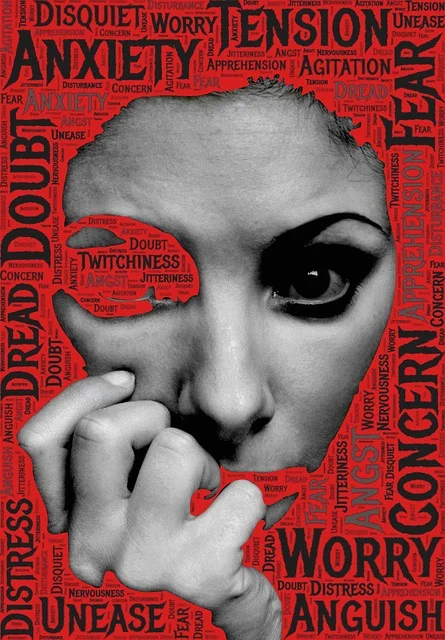Introduction: Understanding Generalized Anxiety Disorder
Generalized anxiety disorder (GAD) is a common and often chronic mental health condition characterized by persistent and excessive worry about a wide range of everyday events. Unlike the transient anxiety most people experience, the worry in GAD is disproportionate to the situation and difficult to control, often lasting six months or more. According to the DSM-5 (Diagnostic and Statistical Manual of Mental Disorders, Fifth Edition), GAD includes symptoms such as restlessness, fatigue, difficulty concentrating, irritability, muscle tension, and sleep disturbances.

Globally, GAD affects approximately 3–6% of the population during their lifetime, with prevalence slightly higher in women than men. The disorder can impair personal relationships, academic or occupational performance, and overall quality of life. Importantly, GAD often co-occurs with other mental health conditions, including depression, other anxiety disorders, and substance use disorders. Early recognition and treatment are essential to prevent long-term impairment and improve functioning.
This article explores treatment options for GAD, including therapy, medications, and approaches tailored for children, emphasizing evidence-based strategies and practical guidance for managing this condition.
How Do You Treat General Anxiety Disorder?
Treating generalized anxiety disorder typically involves a combination of psychotherapy, pharmacological interventions, and lifestyle modifications. The most effective approaches are evidence-based and tailored to the individual’s symptoms, age, and comorbid conditions.
Psychotherapy
Psychotherapy, particularly Cognitive Behavioral Therapy (CBT), is considered the gold standard for treating GAD. CBT focuses on identifying and challenging negative thought patterns that exacerbate anxiety. Adolescents and adults with GAD often exhibit cognitive distortions, such as overestimating the likelihood of negative outcomes and underestimating their coping abilities. CBT helps individuals reframe these thoughts, develop problem-solving skills, and engage in behavioral experiments to reduce avoidance.
Other psychotherapeutic approaches include:
- Acceptance and Commitment Therapy (ACT): Encourages acceptance of anxious thoughts rather than avoidance, promoting psychological flexibility.
- Mindfulness-Based Cognitive Therapy (MBCT): Uses mindfulness techniques to help individuals observe their thoughts without judgment and reduce emotional reactivity.
- Interpersonal Therapy (IPT): Focuses on improving interpersonal relationships and reducing stress that can trigger anxiety.
Lifestyle and Self-Management Strategies
Lifestyle modifications complement therapy by addressing physical and environmental factors that contribute to anxiety:
- Exercise: Regular physical activity reduces stress and improves mood through endorphin release.
- Sleep hygiene: Maintaining consistent sleep routines and limiting stimulants supports emotional regulation.
- Stress management: Relaxation techniques, deep breathing, and meditation reduce physiological arousal associated with anxiety.
- Nutrition: A balanced diet and adequate hydration support overall mental health.
- Social support: Maintaining connections with supportive family and friends can buffer stress and enhance coping.
Combining psychotherapy with lifestyle strategies often enhances treatment effectiveness and promotes long-term resilience.
Pharmacological Treatment Options for GAD
When symptoms are moderate to severe or significantly impair functioning, pharmacotherapy may be recommended alongside psychotherapy. Medications for GAD are aimed at reducing excessive worry, physical tension, and emotional distress.
Selective Serotonin Reuptake Inhibitors (SSRIs)
SSRIs are first-line medications for GAD due to their efficacy and relatively favorable safety profile. Commonly prescribed SSRIs include:
- Sertraline (Zoloft)
- Escitalopram (Lexapro)
- Paroxetine (Paxil)
- Fluoxetine (Prozac)
SSRIs work by increasing serotonin levels in the brain, which helps regulate mood and anxiety. Benefits typically emerge after 4–6 weeks, and side effects may include gastrointestinal disturbances, headache, or mild sleep changes. Regular monitoring by a physician is essential to ensure effectiveness and manage adverse effects.
Serotonin-Norepinephrine Reuptake Inhibitors (SNRIs)
SNRIs, such as venlafaxine and duloxetine, are also effective for GAD. These medications increase both serotonin and norepinephrine activity, which can improve both emotional regulation and physical symptoms of anxiety, such as muscle tension or restlessness.
Other Medications
- Benzodiazepines: Fast-acting anti-anxiety drugs useful for short-term relief. They are generally reserved for acute episodes due to risk of dependence.
- Buspirone: An anxiolytic specifically indicated for GAD, particularly beneficial for long-term management without the dependency risk associated with benzodiazepines.
- Adjunctive therapies: In certain cases, low-dose atypical antipsychotics or other medications may be considered under specialist supervision.
Which Medication Is Used to Treat Both GAD and Depression?
Many individuals with GAD also experience comorbid depression, making dual-action medications valuable. SSRIs and SNRIs are effective in managing both disorders:
- SSRIs (e.g., sertraline, escitalopram, fluoxetine): Reduce anxiety and depressive symptoms by enhancing serotonergic transmission.
- SNRIs (e.g., venlafaxine, duloxetine): Target both anxiety and depressive mood through serotonin and norepinephrine pathways.
When selecting a medication, clinicians consider symptom severity, side effect profile, and the individual’s history of response to previous treatments. Combining pharmacotherapy with psychotherapy often yields superior outcomes compared to medication alone.
What SSRI Is Best for GAD?
Clinical guidelines do not universally designate a single “best” SSRI for GAD; however, certain SSRIs are commonly preferred based on evidence and tolerability:
- Escitalopram: Highly selective and generally well-tolerated, often considered first-line due to minimal drug interactions.
- Sertraline: Widely studied in adults and adolescents, effective for both GAD and comorbid depression.
- Paroxetine: Effective but associated with higher rates of sedation and withdrawal symptoms; generally prescribed when other SSRIs are ineffective.
- Fluoxetine: Longer half-life reduces withdrawal risk, making it suitable for patients prone to adherence issues.
The choice of SSRI is individualized, balancing efficacy, tolerability, and patient preference. Regular follow-up and dose adjustments optimize therapeutic response.
What Is Generalized Anxiety Disorder in Children?
While GAD is often associated with adults, it also affects children and adolescents. Childhood GAD manifests differently, with worry focusing on school performance, family health, friendships, or future events. Key features include:
- Excessive worry disproportionate to the situation and difficult to control.
- Physical symptoms: headaches, stomachaches, fatigue, or muscle tension.
- Behavioral signs: avoidance of school, reluctance to participate in social activities, and excessive reassurance-seeking.
- Emotional signs: irritability, restlessness, or difficulty concentrating.
Treating GAD in children requires special consideration. Cognitive-behavioral therapy tailored for children, parental involvement, and school-based interventions are essential. Pharmacotherapy may be considered cautiously, with SSRIs like sertraline or fluoxetine being preferred due to established safety and efficacy in pediatric populations.
Lifestyle and Self-Management Strategies
Lifestyle changes and self-management are critical components of GAD treatment for all age groups. Evidence suggests that consistent lifestyle interventions enhance therapy and medication effectiveness.
Mindfulness and Relaxation Techniques
Mindfulness practices, such as meditation, deep breathing, and progressive muscle relaxation, reduce physiological symptoms of anxiety and enhance emotional regulation.
Exercise and Physical Activity
Regular aerobic exercise, yoga, or other physical activities have been shown to decrease anxiety symptoms by modulating stress hormone levels and improving mood.
Sleep and Nutrition
Adequate sleep, reduced caffeine intake, and a balanced diet support neurological and emotional functioning, directly impacting anxiety regulation.
Social Support and Community Engagement
Participation in support groups, peer mentoring, or recreational activities fosters resilience, reduces isolation, and provides opportunities for practicing coping skills.
Combining Therapy and Medication for Optimal Results
Research consistently shows that integrated treatment approaches, combining psychotherapy and pharmacotherapy, produce superior outcomes in GAD management. CBT addresses maladaptive thought patterns and avoidance behaviors, while medications help regulate neurochemical imbalances, allowing patients to fully engage in therapy.
Treatment plans should be individualized, taking into account age, comorbidities, symptom severity, and personal preferences. Regular monitoring, adjustment of therapeutic interventions, and ongoing support from healthcare providers optimize outcomes.
Conclusion: Choosing the Right Treatment for GAD
Generalized anxiety disorder is a treatable condition. Evidence-based interventions, including psychotherapy, pharmacotherapy, and lifestyle strategies, offer effective symptom reduction and improved quality of life. SSRIs and SNRIs are first-line pharmacological options, effective for both anxiety and comorbid depression, while CBT remains the gold standard for therapy.
For children and adolescents, tailored interventions, parental involvement, and school-based support are crucial. Lifestyle modifications, mindfulness practices, and social support enhance treatment efficacy. Early recognition, consistent treatment, and a holistic approach empower individuals with GAD to manage symptoms successfully and lead fulfilling lives.
By integrating evidence-based therapies, safe and effective medications, and proactive lifestyle strategies, patients, families, and clinicians can collaboratively address the challenges of generalized anxiety disorder, paving the way toward resilience, emotional stability, and improved mental health.



